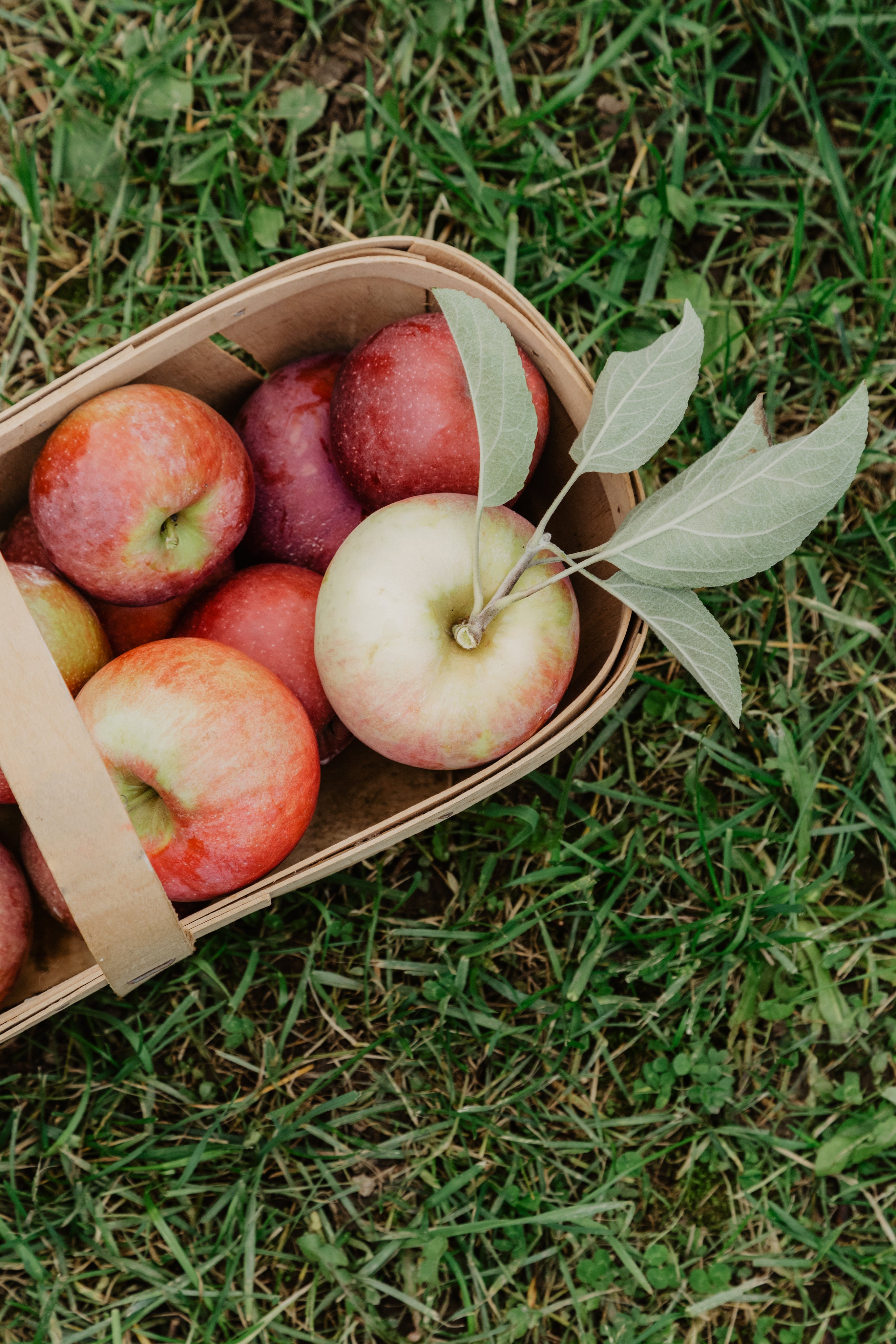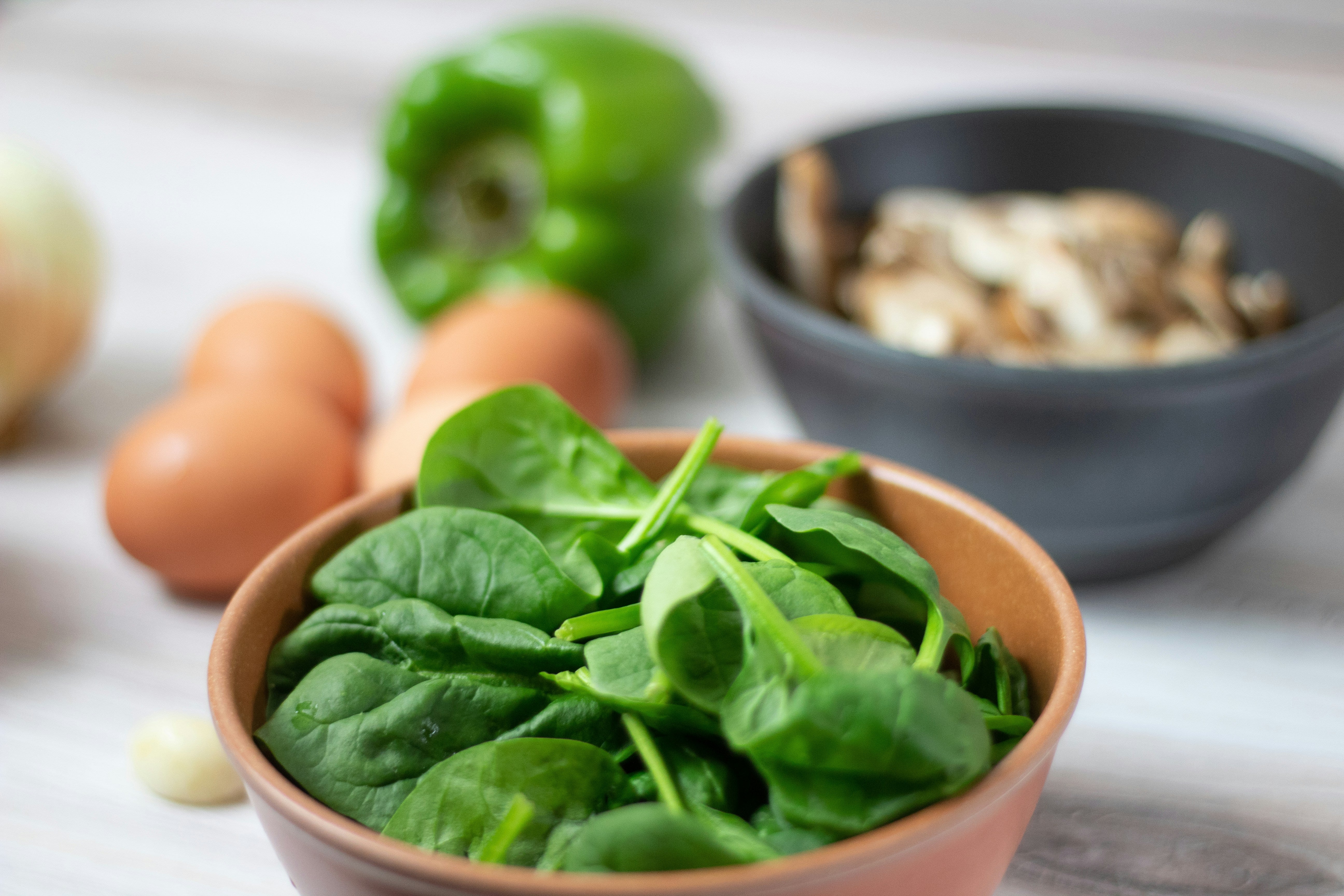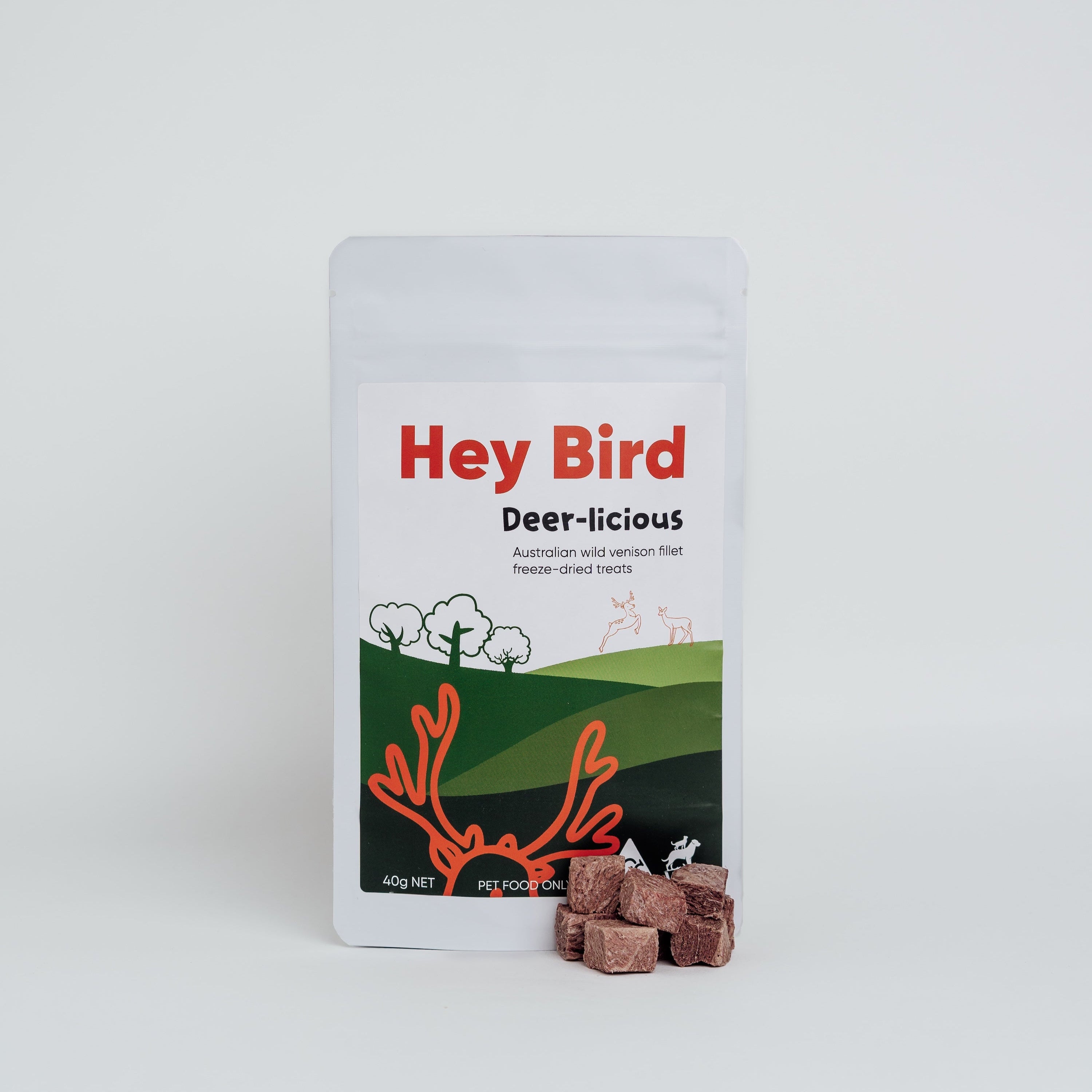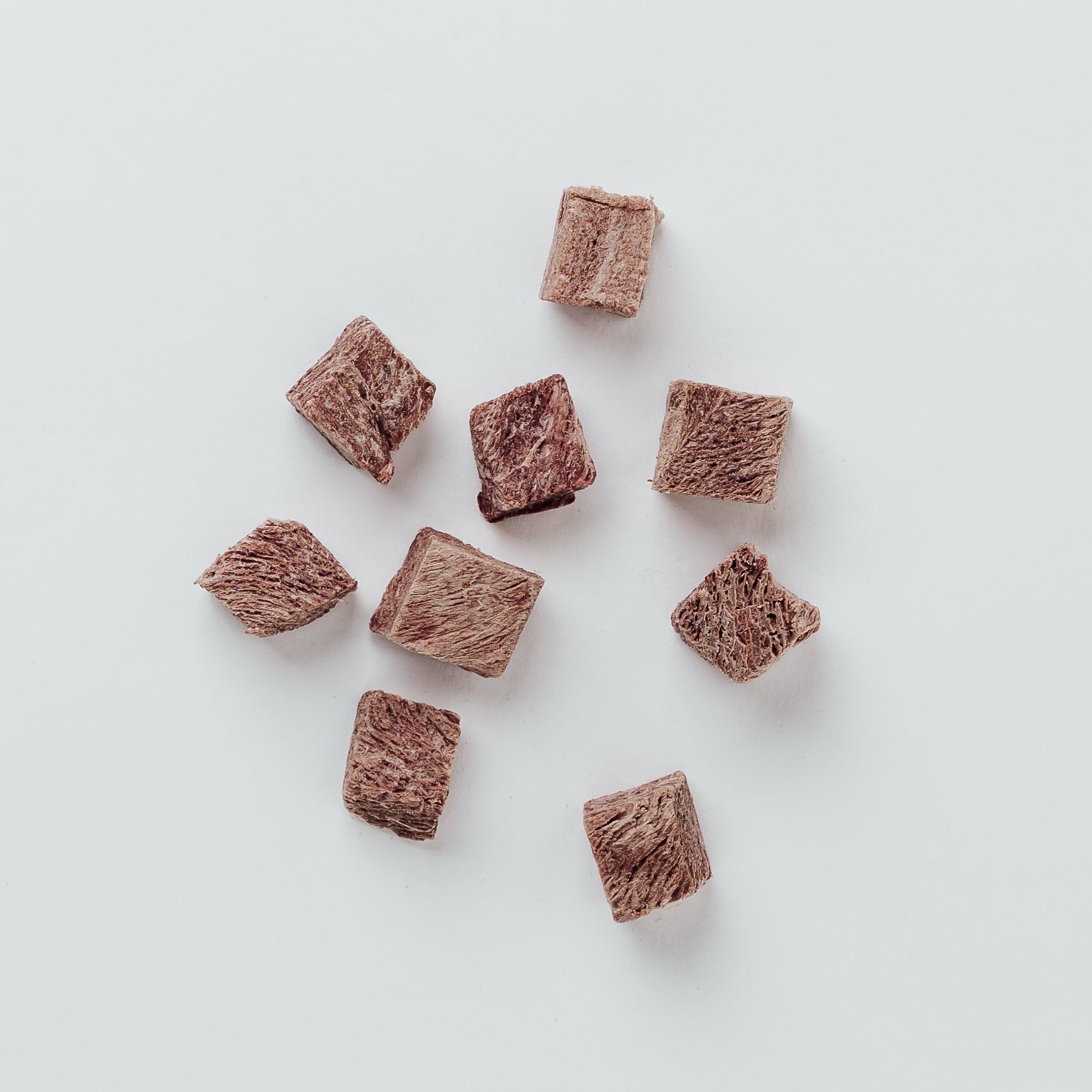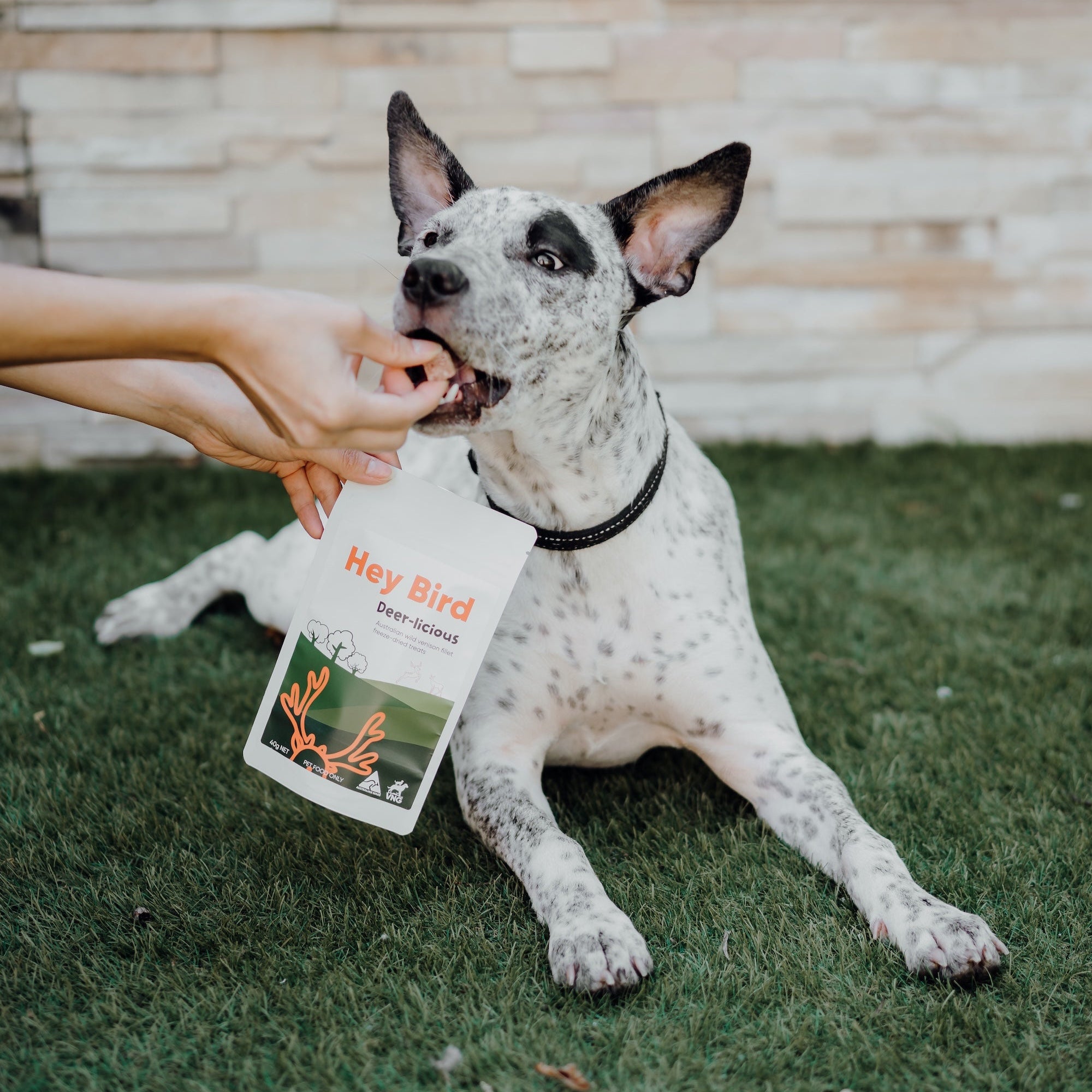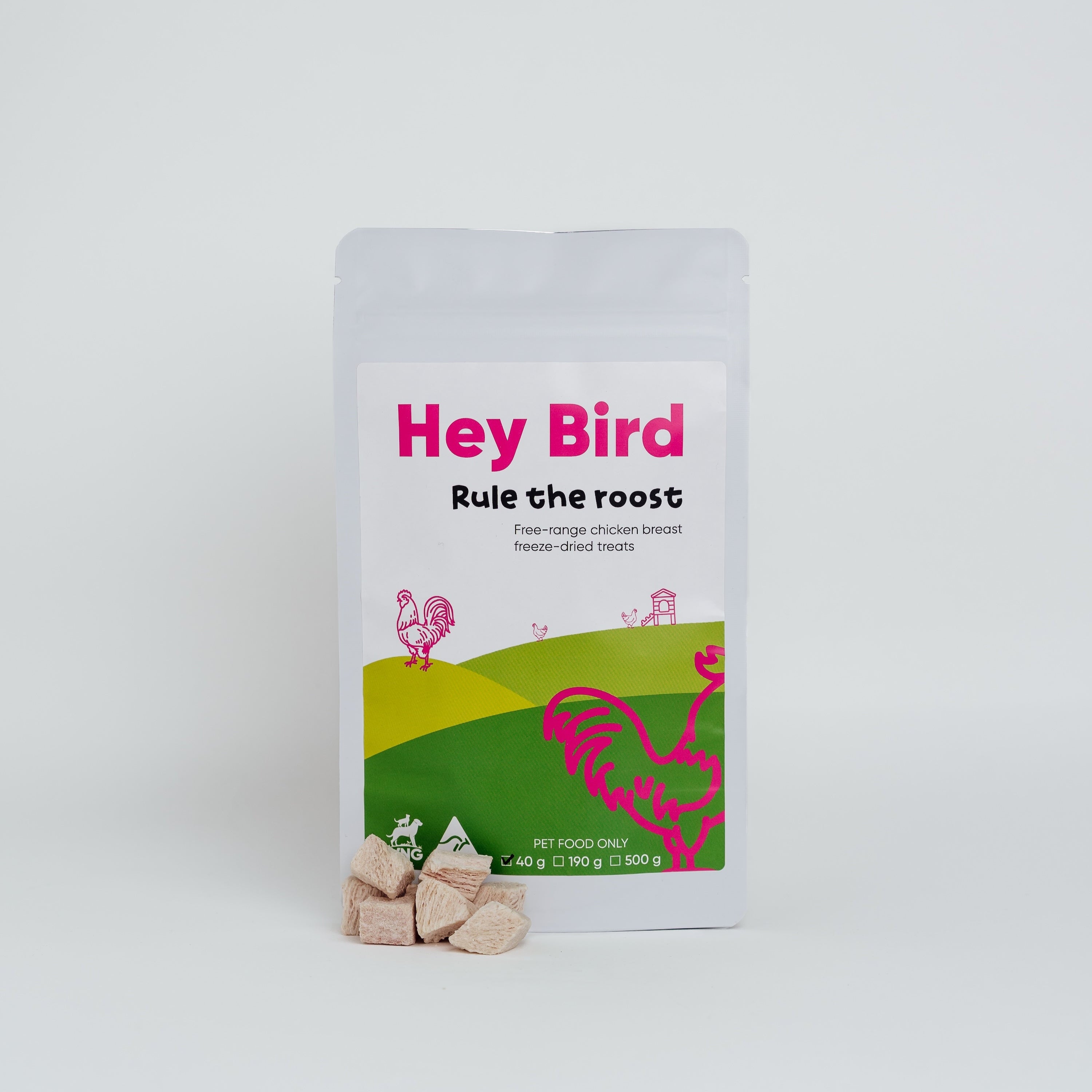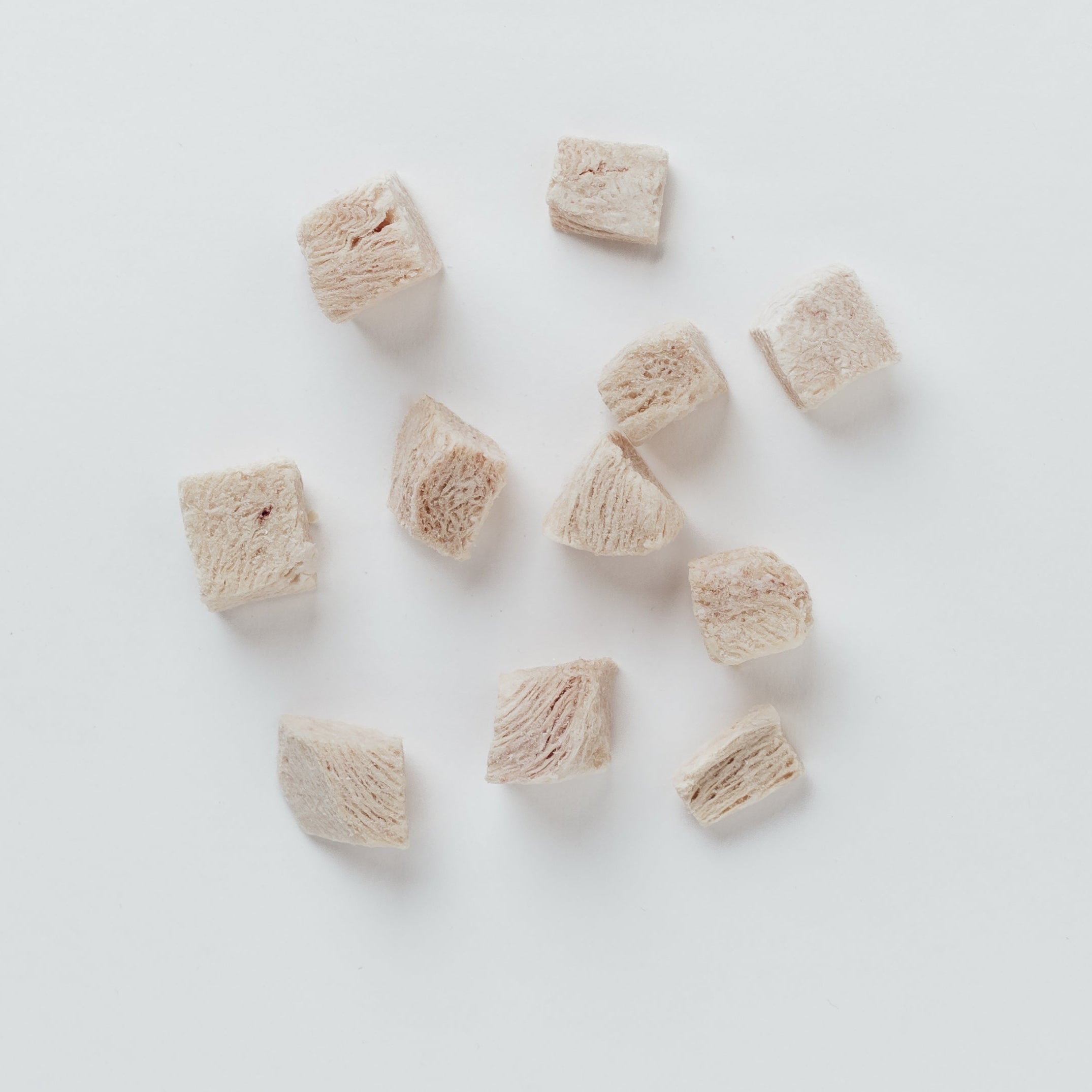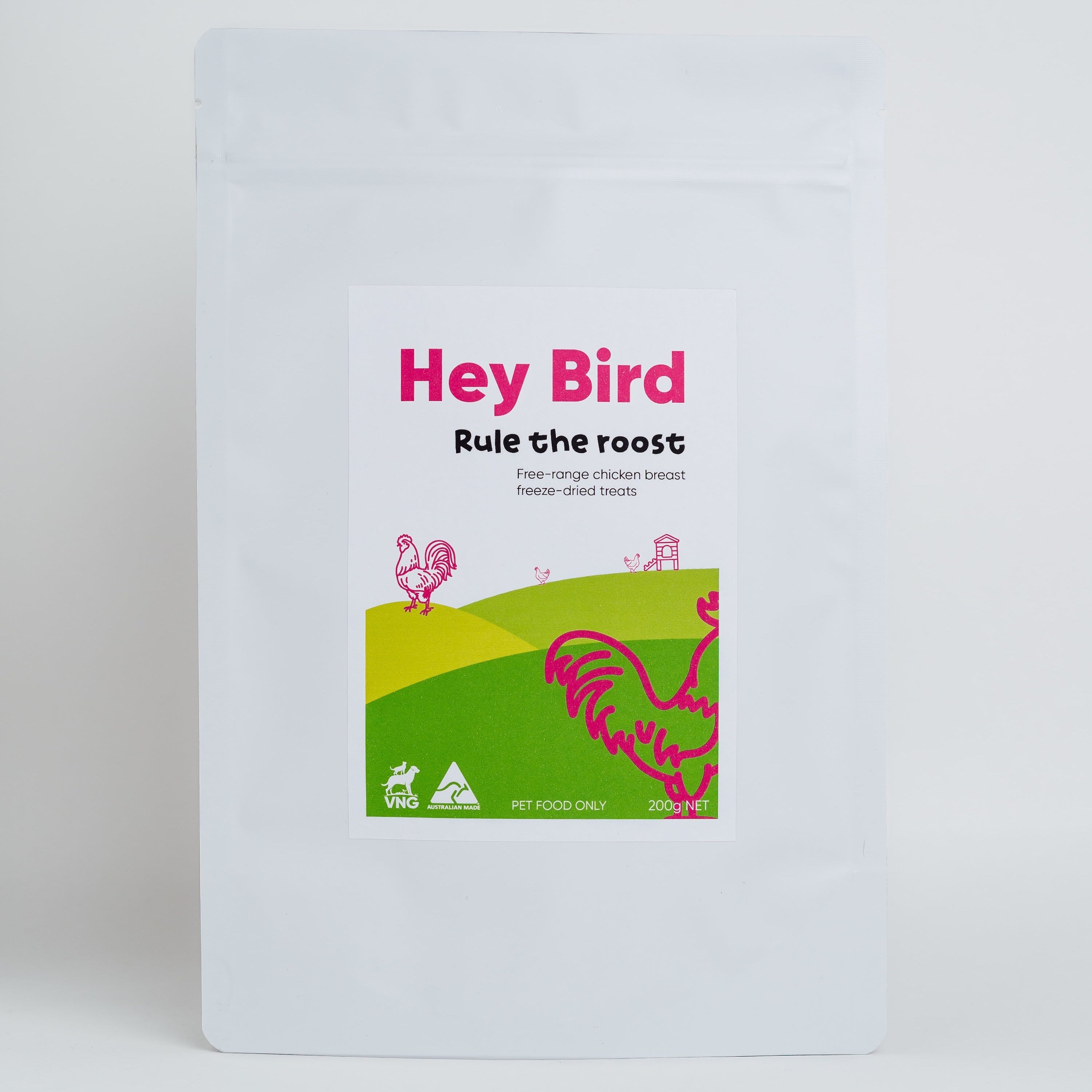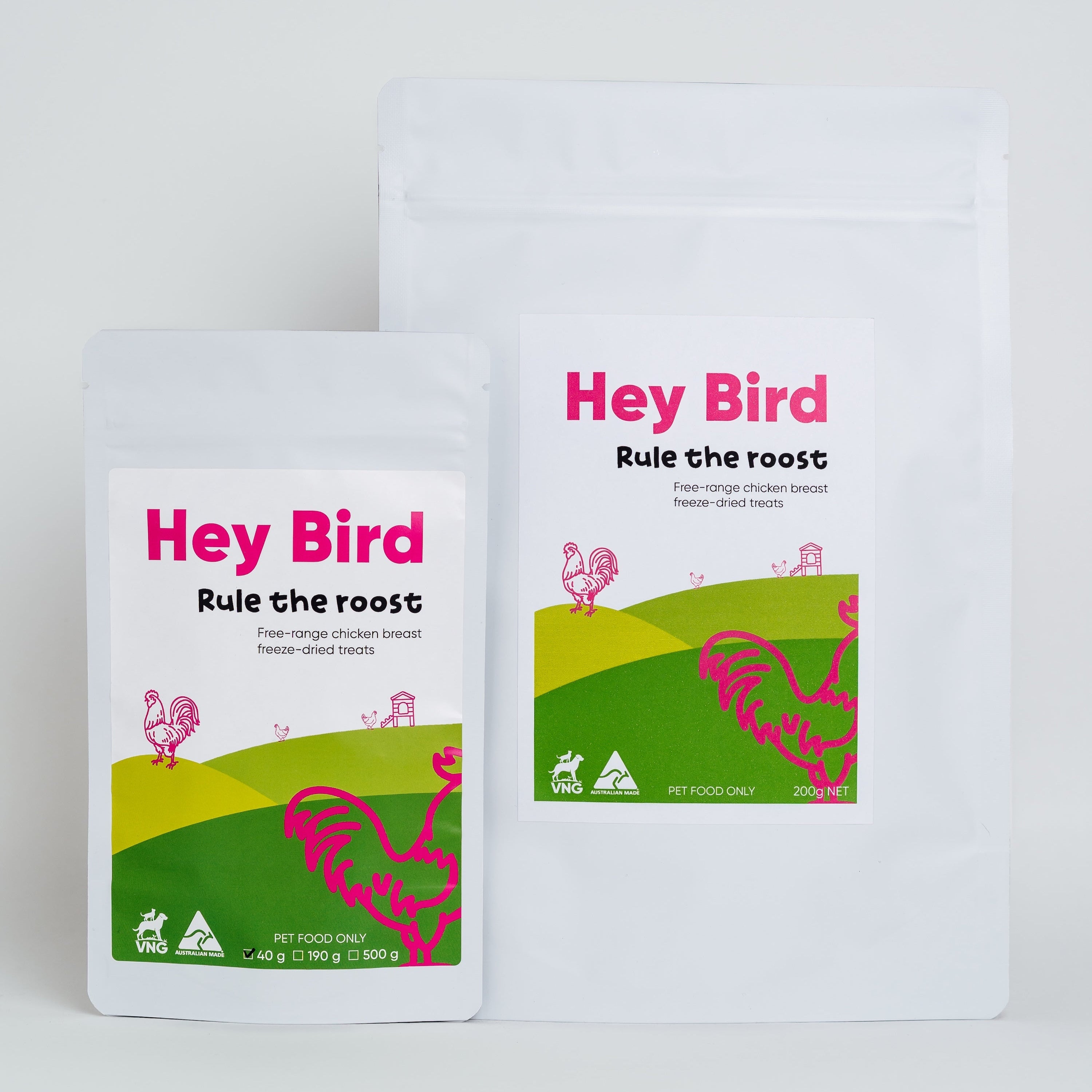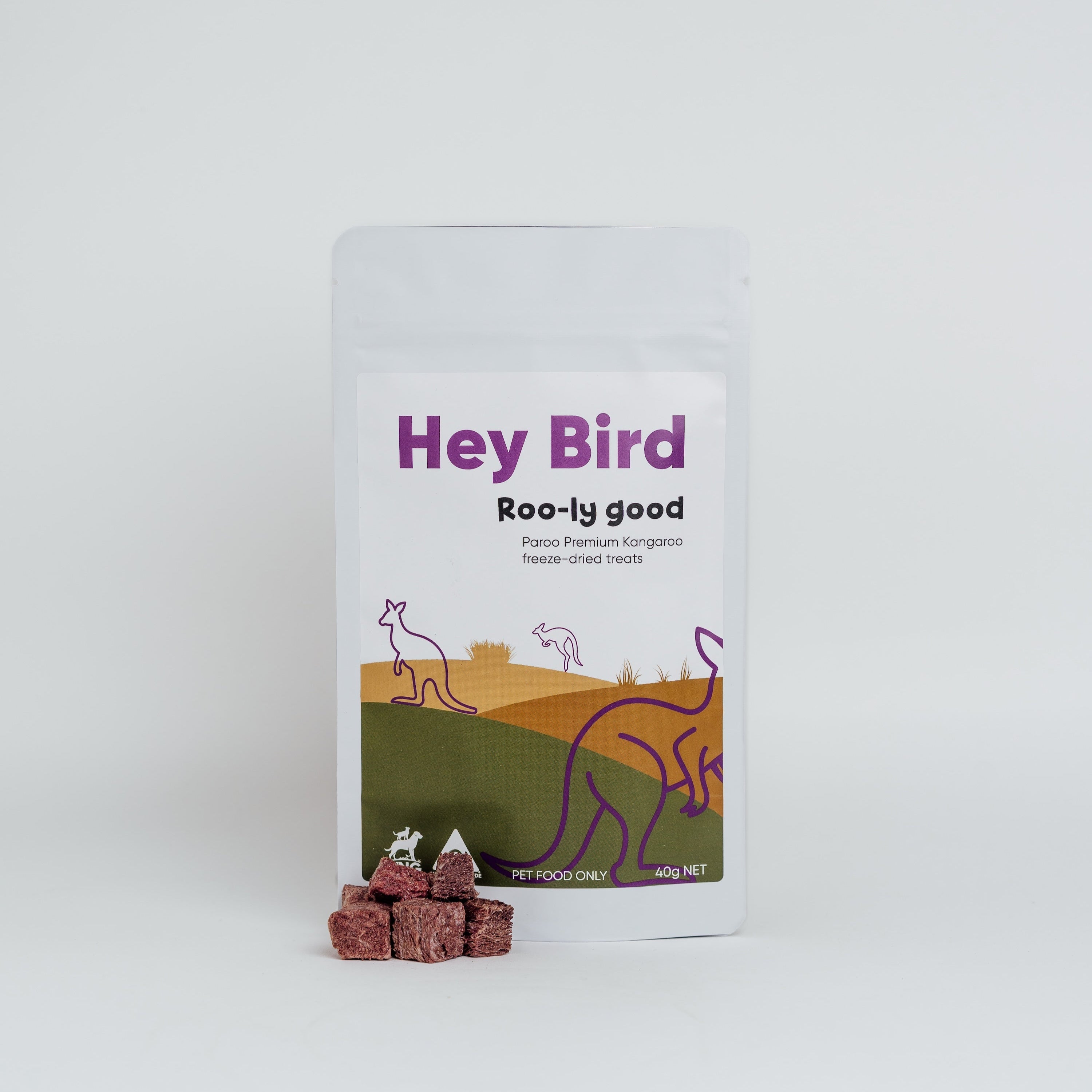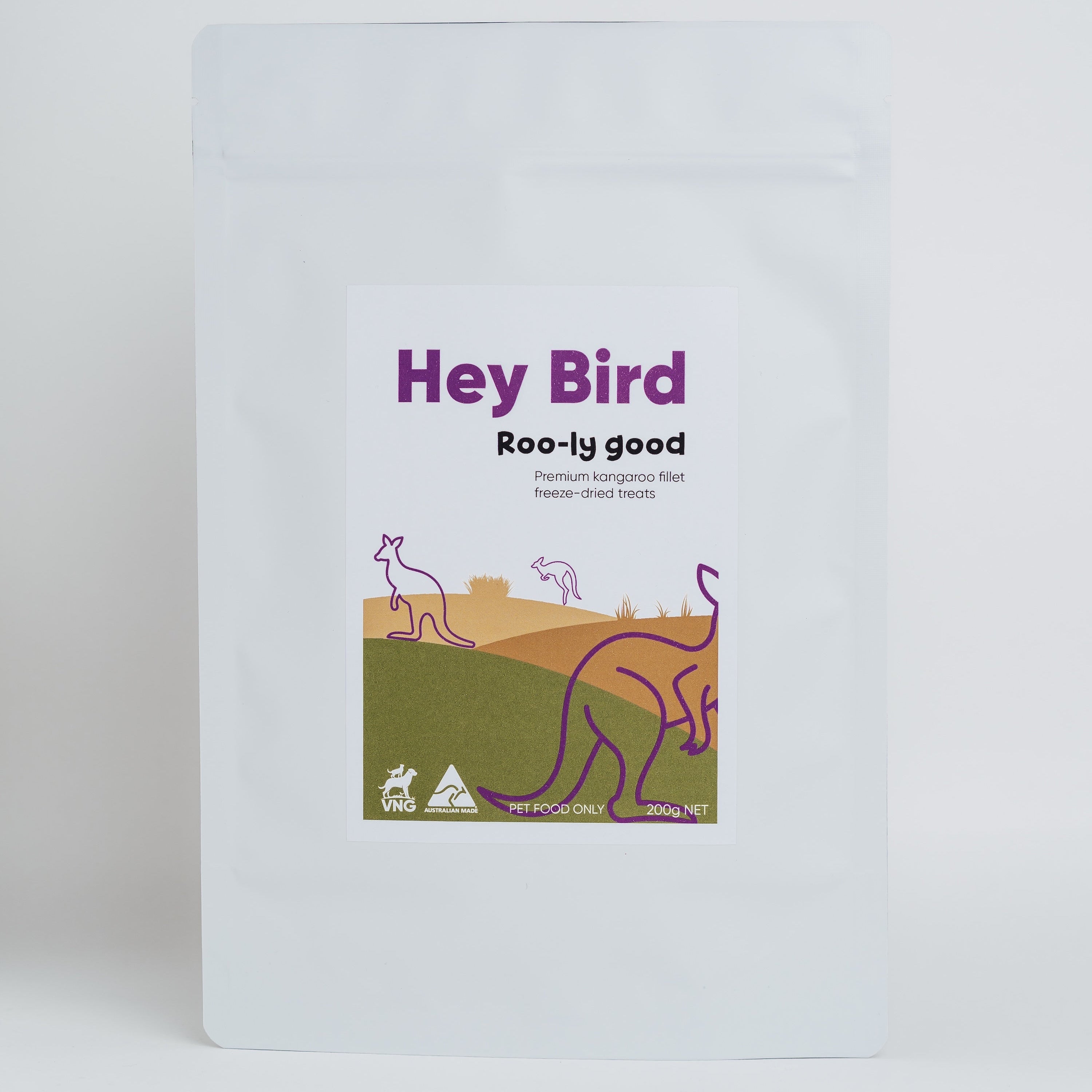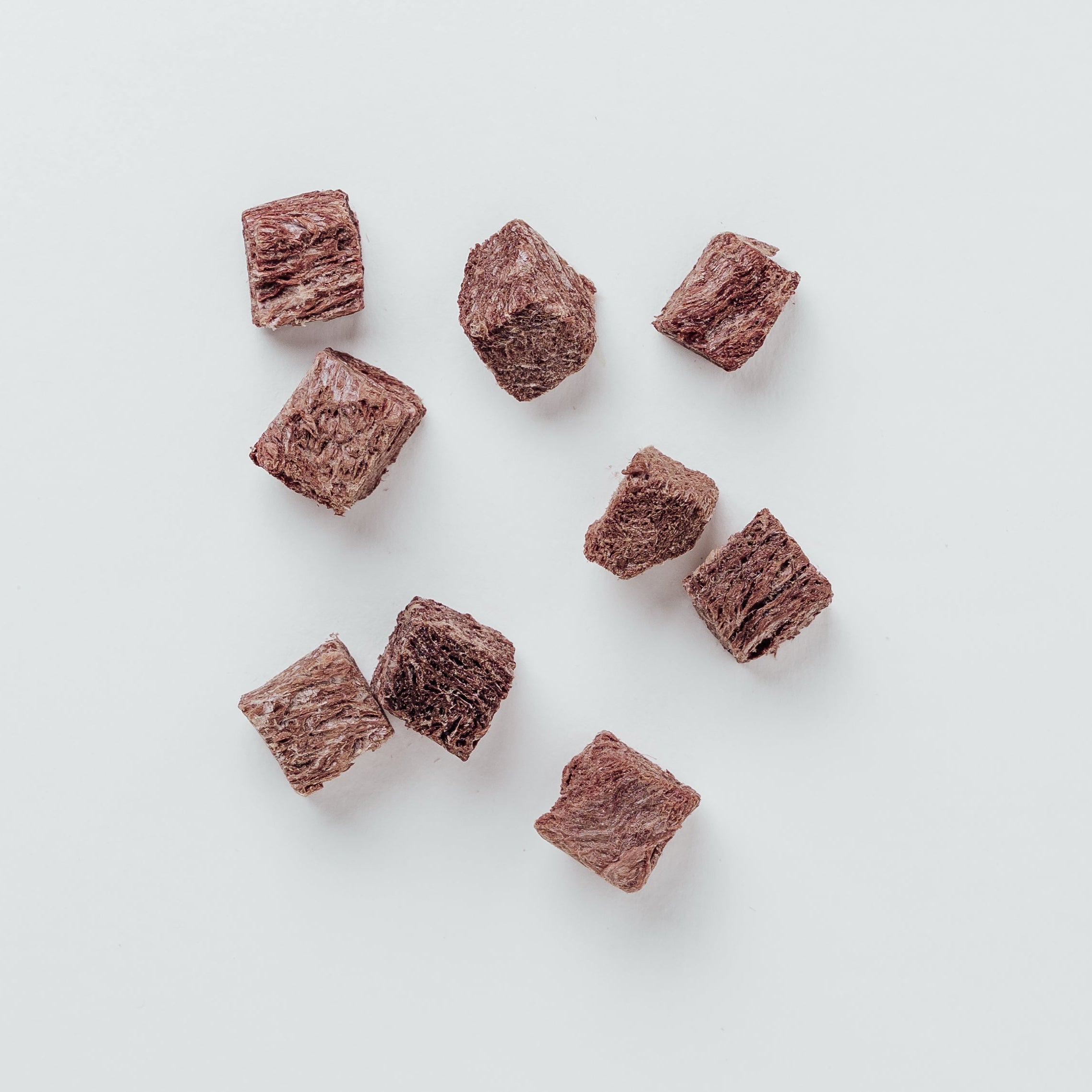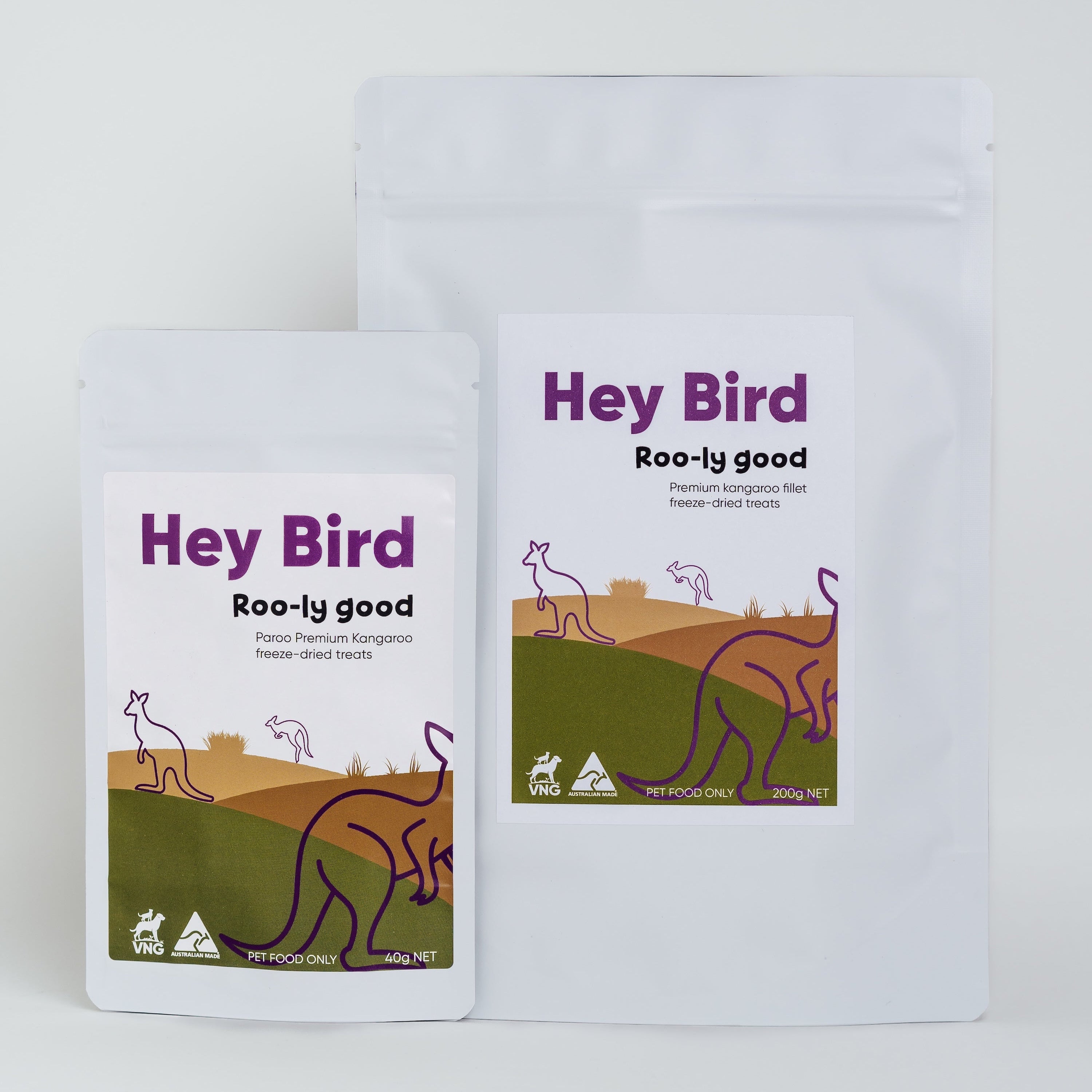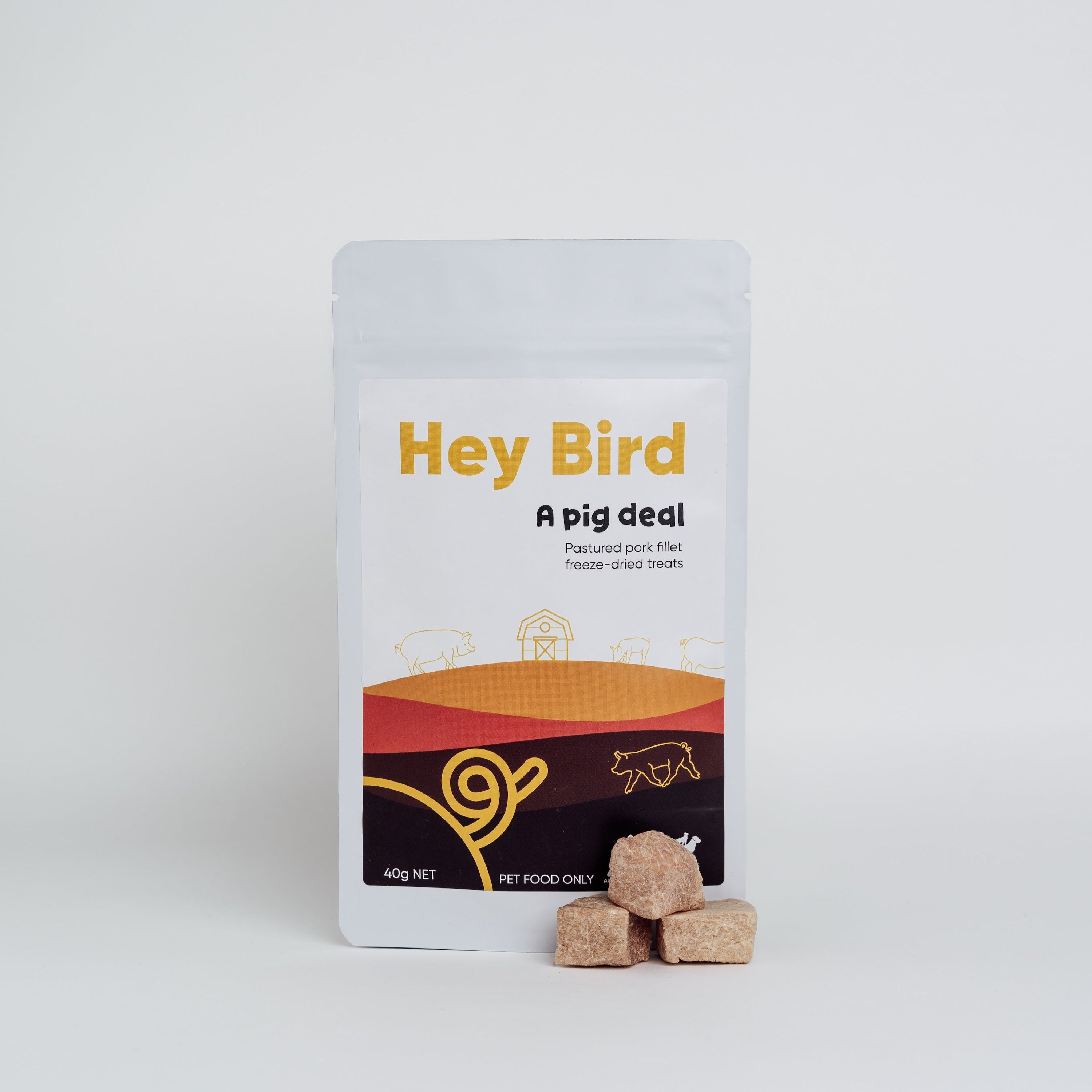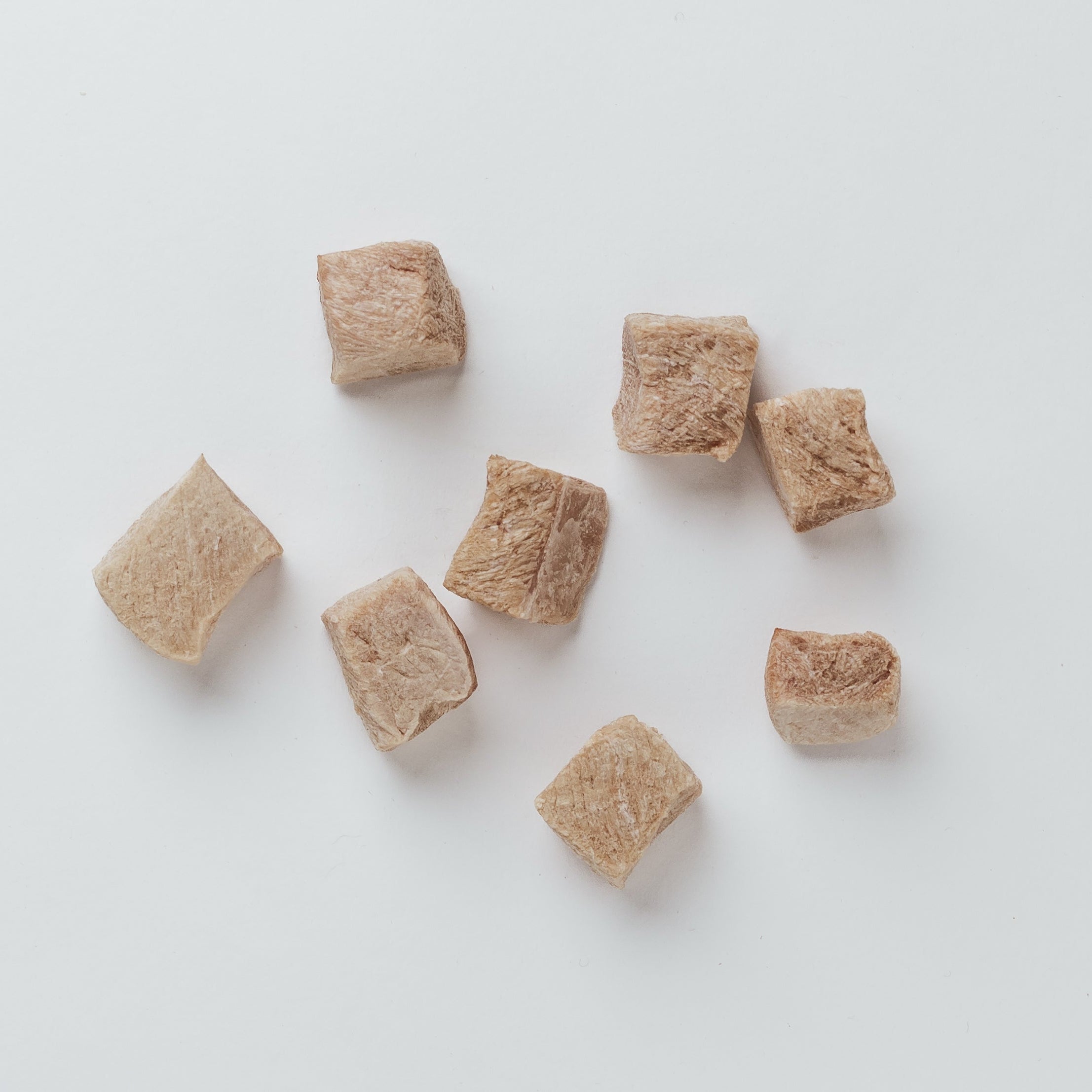
Feeding guide for healthy adult dogs
With CompleteMe Canine
Make balanced and nutritious dog food at home quickly and easily.
Choose the meat, vegetables and other ingredients you would like to use with our simple, flexible guide.
Makes 1 kilogram of food, which can be portioned and frozen.
Ingredients
500 grams of meat (2-8% fat)
(see FAQs below for recommended meat types and cuts)
480 grams of cooked vegetables, fruit and/or fibre-rich whole grains
(for any included grains, please weigh out the required amount after cooking)
3 mL omega-3 rich oil (3 x 1000 mg capsules)
(choose from: fish oil, salmon oil, krill oil, or marine algae oil)
3 teaspoons of omega-6-rich oil
(choose from: hempseed oil, walnut oil, rice bran oil, pumpkin seed oil, canola oil or sesame oil)
15 grams of CompleteMe Canine
Optional:
25 grams of raw offal
(choose from: liver, kidney, spleen, heart, tripe, lung, or gizzards)
1 to 2 small whole eggs, including white and yolk (no shell)
1-2 tablespoons of any of the following:
Fresh herbs, bone broth, fermented vegetables, goats milk, natural yoghurt, plain kefir, chia seeds or ground flaxseeds (maximum 1 teaspoon), ginger or turmeric (maximum ¼ teaspoon recommended), organic soy sauce or miso paste (maximum ½ teaspoon recommended), sardine or mackerel fillets (canned in spring water).
Directions
- Gently pan-fry the diced meat with 50 mL water until cooked.
Omit this step if you would prefer to use raw meat. - Steam or microwave the chopped vegetables until very soft.
- If using grains, cook as per the manufacturer's instructions until soft.
- Combine the meat (including liquid from pan), cooked vegetables and grains, diced fruit, and oils, and mix well.
- Allow to cool then add 15 grams of CompleteMe Canine and mix again.
- Portion and refrigerate, or freeze as desired.
Storage and safety
Do not add to any commercial dog food, or use with any other nutritional supplements (containing vitamins and/or minerals).
For raw meat, freeze for 10 days before use to destroy parasites like Toxoplasma. In areas with Trichinella, please freeze pork for 3 weeks before use.
Larger batches can be made and frozen for convenience. Keep refrigerated food for 3 days, and frozen food for 3-4 months. We recommend defrosting food in the fridge or in a warm water bath. Please discard any uneaten food after 30 minutes.
Some of our favourite combos ...
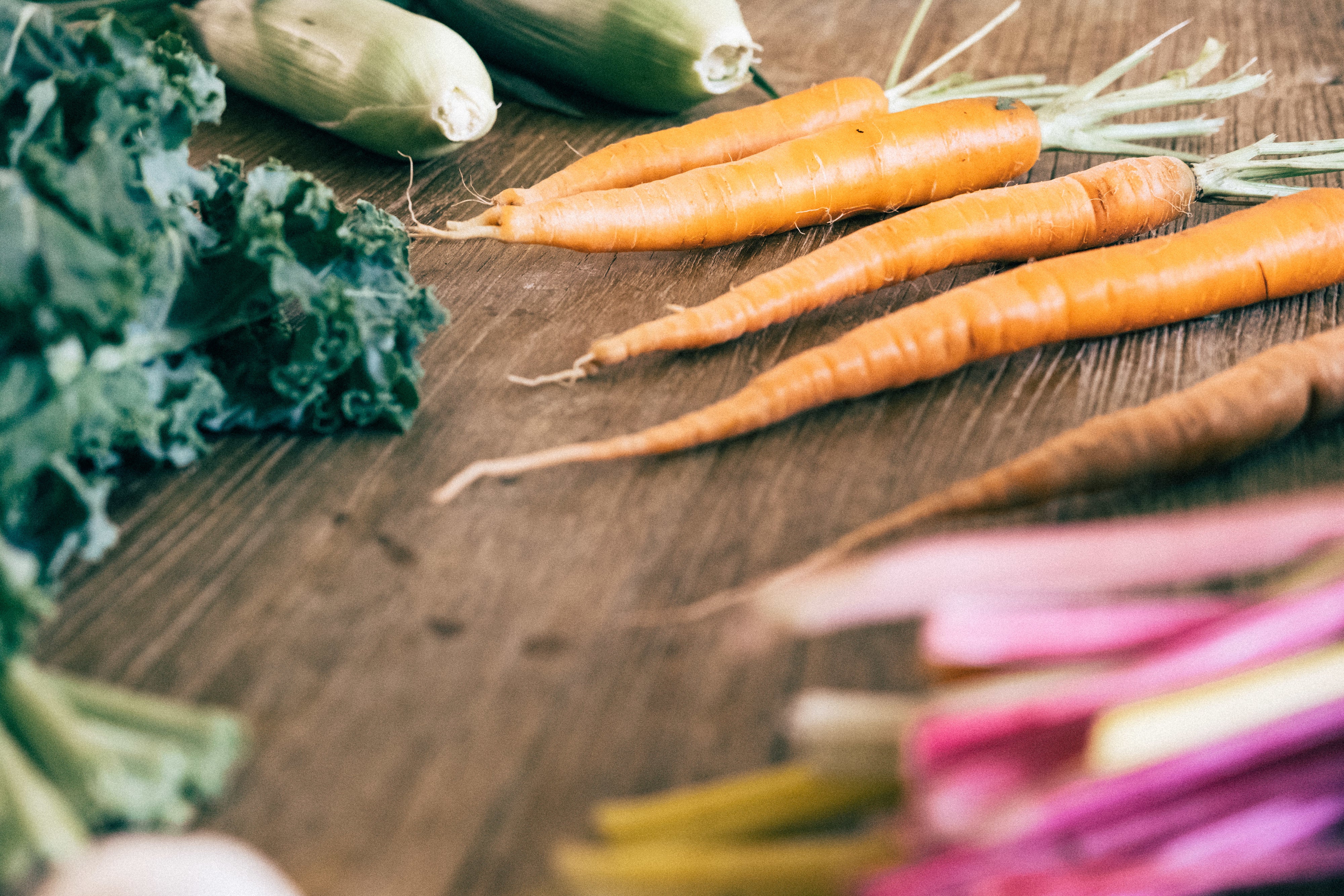
Turkey and egg with oats, carrot, broccoli and pear
500 g skinless turkey breast
1-2 hard-boiled eggs (no shell)
300 grams cooked rolled oats
70 g carrot (fresh or frozen)
50 g broccoli (fresh or frozen)
50 g pear (including peel)
3 mL fish oil, krill oil or marine algae oil
3 teaspoons hemp seed oil
15 g CompleteMe Canine

Kangaroo and sweet potato with kale, berries and cauliflower
500 g kangaroo mince (2-3% fat)
300 grams sweet potato (including peel)
80 cauliflower (fresh or frozen)
50 g kale (fresh or frozen)
50 g mixed berries (fresh or frozen)
3 mL fish oil, krill oil or marine algae oil
3 teaspoons hemp seed oil
15 g CompleteMe Canine
Feeding guidelines
Toy/mini breeds (<5 kg): 150-300 g/day
Small breeds (5-10 kg): 250-650 g/day
Medium breeds (10-25 kg): 600-1200 g/day
Large breeds (25-45 kg): 1100-2000 g/day
Giant breeds (45-80 kg): 1500-3500 g/day
Feeding quantities are estimates, and are based on fresh food which contains significantly higher moisture than dry food. The energy density of the diet will also change depending on the ingredients you select (lower fat = less energy dense = more food is needed).
Adjust up or down the amount of food based on your dog's size, body condition, age, and activity level.
If your dog gains unwanted weight, reduce the amount you are feeding by 10-15% and reweigh after a week. If they have unwanted weight loss, increase the amount you are feeding by 10-15% and reweigh after a week. Continue to adjust until the right amount of food is determined. Please consult with your dog's veterinarian as needed.
Learn how to quickly body condition score your dog here.
Nutritional information
Food made as per the instructions above is complete and balanced, and meets the nutritional levels established by the AAFCO Dog Food Nutrient Profile for maintenance in adult dogs.
It is not suitable for growth and should not be fed to puppies or reproducing females, or dogs with medical conditions.
The average kcal/gram for the diet is: 1.2 kcal/gram
The average protein for the diet is:
60% on a dry matter basis
45% on a caloric basis
The average fat for the diet is:
14% on a dry matter basis
31% on a caloric basis
All possible combinations are moderate in carbohydrate, high in moisture, and high in fibre, antioxidants and omega-3.
FAQs
What meat can I use?
A large number of meats and cuts can be used with CompleteMe Canine. Variety is important; we strongly recommend feeding a range of different meat types and cuts. Don't exclusively feed very lean meats. 5% fat is a good everyday choice, with occasional higher and lower fat meats as well. Try to include different textures as well, for example, chunks, small strips, mince, etc.
- Poultry:
Skinless and boneless chicken thigh, drumstick or breast, mince (2-3% fat), gizzards, hearts (fat trimmed off)
Skinless and boneless turkey or duck breast or turkey mince (6% fat) - Pork:
Lean pork mince or diced pork loin with 5% fat, rump steak (untrimmed) - Lamb, beef, goat, or venison:
Extra-lean diced lamb or goat meat (including heart or tongue) with 5% fat
Lean venison fillet or steak (e.g. shoulder, backstrap, rump eye, leg steak)
Extra-lean (5 star) beef mince, gravy or chuck beef with 5% fat, blade, round or rump steak (fat trimmed off), eye fillet or topside roast or steak (fat trimmed off)
Lamb or beef heart (fat trimmed off) - Game meat:
Lean kangaroo or wallaby mince or steak with 2-3% fat
Wild or farmed boneless rabbit or hare meat
Emu fan fillet or flat fillet (1-3% fat)
Wild boar backstrap, boneless leg, or loin chops - Fish:
Skinless and boneless white fish fillets, like whiting, hoki, ling, or barramundi
Tuna, canned in springwater
(please don't feed fish exclusively)
Which vegetables and fruits are safe for dogs?
For vegetables, try pumpkin, sweet potato, broccoli, cauliflower, green beans, green peas, carrot, zucchini, squash, spinach, kale, turnips, parsnips, watercress, Asian greens, mushrooms, tomato, capsicum or cabbage.
Both fresh and frozen vegetables are fine. We recommend steaming or microwaving for most vegetables, however baking can also work well sometimes.
For fruit, try strawberries, blueberries, raspberries, apple, pear, banana, mango, peach, plum, kiwifruit, guava, papaya, pineapple, watermelon, rockmelon or honeydew melon. Please be very careful to remove any pits or stones, and avoid toxic fruit like grapes, raisins or currants.
Should I include grains, and if so, what are the options?
It is a myth that dogs are frequently allergic to grains; in fact, an allergy to grains is quite uncommon. Whole grains are energy-dense and economical, as well as being rich in essential nutrients and fibre. They can be a very valuable addition to your dog's diet, especially for large to giant-breed dogs needing a big volume of food per day.
Some options to try:
- Quinoa or amaranth
- Brown rice, black rice or red rice
- Rolled oats (avoid instant oats)
- Pearled barley
- Wholewheat pasta
- Teff or couscous
- Buckwheat
Avoid millet, which contains compounds that can cause thyroid problems. For any included grains, it is important to ensure they are cooked very thoroughly to ensure they are highly digestible.
For rice, we recommend occasional use, and cooking in lots of water on the stove to reduce the arsenic content.
How can I store the food?
This makes just over 1 kilogram of food, which can be portioned and fed immediately, or stored in the fridge (max 3 days) or freezer (max 3 months) until needed.
Can I use raw meat?
You can include the meat raw or cooked, depending on preference. For raw human-grade meat, be sure to freeze the meat for 10 days prior to use. For pork (in areas with Trichinella), freezing for 3 weeks prior to use is sensible. Please discuss raw-feeding with your dog's veterinarian; raw feeding is not suitable for all dogs or households.
My dog needs a low fat diet; can I use this diet?
For a low fat diet, we recommend using CompleteMe Hypo Canine with our low-fat feeding guide. This will produce a diet with a fat content similar to prescription low-fat diets.
My dog has allergies, can I use novel proteins like emu or crocodile?
Yes, using novel proteins is fine. Please select proteins with 2-10% fat only. Some options could include:
Emu fan or flat fillet, or full rump
Crocodile tail or leg meat
Venison mince, fillet or steak
Wild boar shoulder (deboned) or mince
Lean diced boneless goat (visible fat trimmed off)


